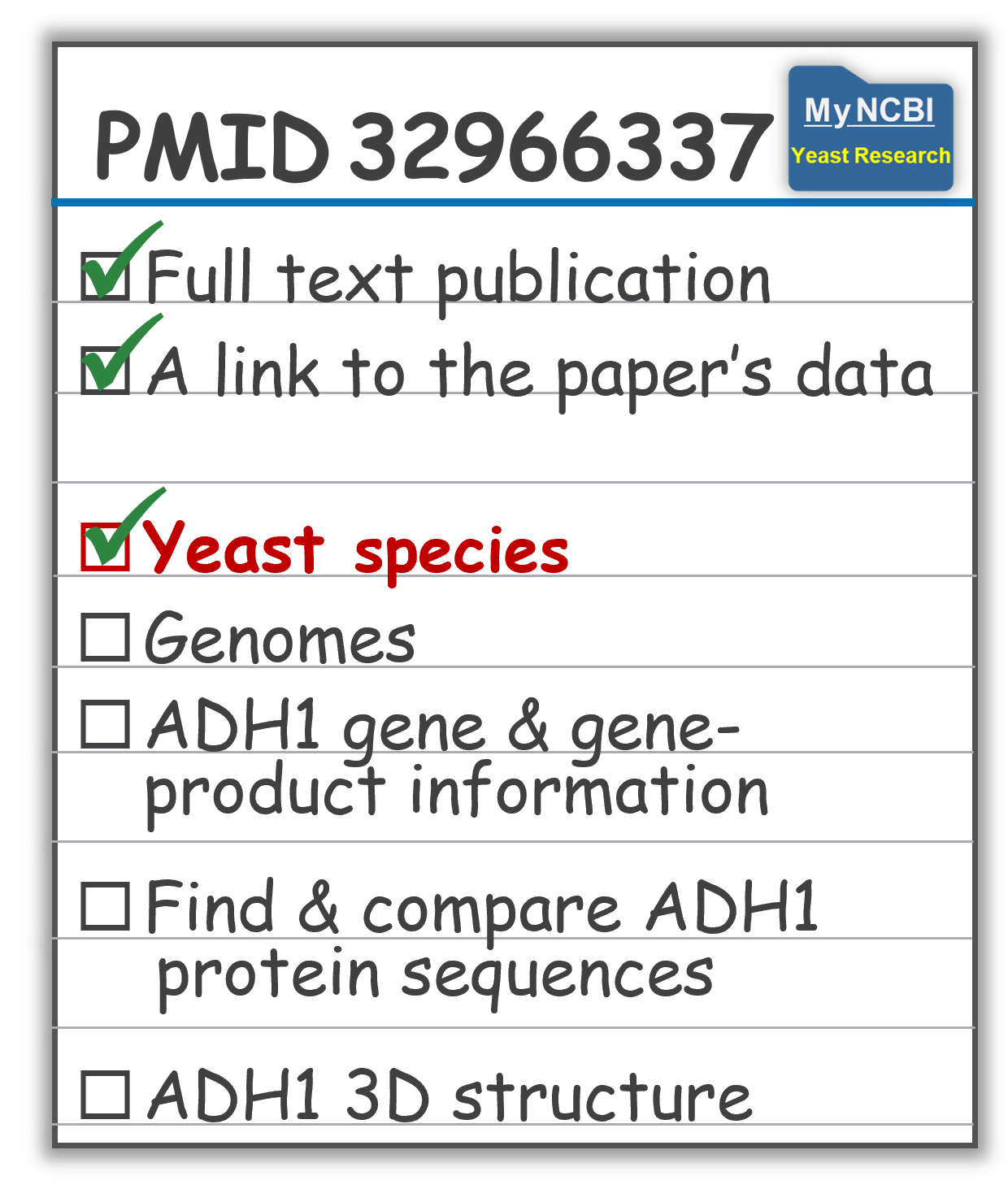Step 2: Finding data about an organism
Background
You may have heard of Saccharomyces cerevisiae before - as this is the most commonly studied eukaryotic organism in the world. It is also the one most used in both baking and brewing industries. But what is Saccharomyces pastorianus?
For the next step of your research, we'll find and save a link to pages with lots of information for each of those two Saccharomyces species. We'll also show you where you can quickly find additional data for these organisms that you might want to explore later in your research project.

Where can you find organism information?
NCBI has a "Taxonomy" group of experts who organize and collate data about organisms. They work with international taxonomy consortia and groups to use universal or standardized names and provide links to additional helpful information.
Note: We do include all of living things that exist in the entire world. We add organisms based on nucleotide (DNA or RNA) sequence submissions. Here's what we have as of today (June 29, 2023):

Once you've found Taxonomy record for your organism, it's a great idea to add it to your NCBI Account collection - so you can always come back later!
Search Taxonomy with the names of the two organisms mentioned in the paper.
2. Search with:
saccharomyces cerevisiae OR saccharomyces pastorianus
3. Due to the "OR" boolean operator, you will retrieve both organism records!
Save the Taxonomy organism pages to the Yeast research folder!
1. Check both boxes and click "Send to" to add to the existing Yeast research folder.
  |
Let's take a look at those Taxonomy pages to see what is there for your organism - including links out to relevant data in other databases!
We could spend an hour on the "Taxonomy Browser", but not today.
Ask questions in Q&A if you have them!
-
-
-
- Top left section: Lists names for this organism from full official scientific with lineage, to common names.
- Bottom section: A table of links to outside resources for this organism that our Taxonomists think might be helpful.
- Top right section: A table of links of "Entrez record" links in each NCBI database for this particular organism. Click on the number to retrieve those records!
-
-
This is an incredible and quick place to find organism-specific data.
For example, functional genomics including transcriptomics experimental studies with data can be found in GEO Datasets.
| For future work, you could click on one of those "Entrez records" table links and quickly find something interesting that you might want to work with. (See the example below.) You can add these to your Yeast research collection or go directly to the record itself and download the data to a folder on your computer! 1. On the Saccharomyces pastorianus Taxonomy record, in the data table section on the right - click on the linked number for GEO Datasets.
2. On the left are filters to narrow down the list. Under "Entry type", click "Series" to narrow the list down to full experimental studies with associated data. 3. Scan the list of studies to find one you may be interested in. 4. As you did above, you can check the box next to this and save it to a collection so you can access it later. Click "Send to" to add it to a collection and then either create a new or add it to an existing collection such as your Yeast research one.   1. If you are interested in learning more about the study and are considering downloading the data itself - click on the name, such as "Expression data from Saccharomyces cerevisiae and Saccharomyces pastorianus var. carlsbergensis". Look it over!
2. We have a tool called GEO2R which will let you do some preliminary analysis of the data. 3. Or you can download the data directly to your own computer (HowTo). |
Feel free to go explore the other Saccharomyces species Taxonomy record to compare what and how much is known about it as compared to the other!
What should we do next to prepare for our research discussion with Dr. Smythe?

Now, go back to the Taxonomy retrieved results page....and we'll next show you how to learn about the genomes of each of these yeast species.
Last Reviewed: June 28, 2023

